Don't wanna be here? Send us removal request.
Text
Revolutionizing Self-Checkout: The Role of HDR USB Cameras in Enhancing User Experience
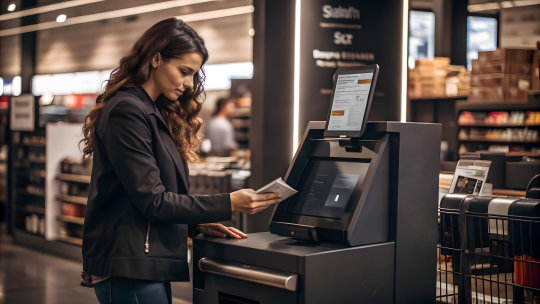
Self-checkout systems are getting more and more common in today’s hectic retail setting. They improve client happiness and expedite the purchasing process. Using HDR USB cameras is a key element of this breakthrough. An effective and user-friendly checkout process is made possible in large part by these cameras.
Understanding HDR USB Cameras
HDR USB cameras utilize High Dynamic Range (HDR) technology to capture images with greater detail in both bright and dark areas. This capability is essential in retail environments, where lighting conditions can vary significantly. By employing HDR technology, these cameras ensure that every product is clearly visible, leading to fewer errors during the scanning process.
Benefits of Using HDR USB Cameras in Self-Checkout
Enhanced Image Clarity The primary advantage of HDR USB cameras is their ability to deliver exceptional image clarity. With improved detail in varying lighting conditions, customers can easily scan items without the frustration of blurry images or misreads.
Improved Scanning Accuracy Accurate scanning is crucial for self-checkout systems. HDR USB cameras reduce the chances of misidentification by capturing more precise details of barcodes and product labels. This accuracy minimizes checkout time and enhances overall efficiency.
User-Friendly Experience A well-designed self-checkout interface, combined with HDR USB cameras, creates a seamless user experience. Customers can swiftly navigate the checkout process, leading to increased satisfaction and repeat visits.
The Technology Behind HDR USB Cameras
Auto Framing Features
One of the standout features of many HDR USB cameras is their auto framing capability. This technology automatically adjusts the camera’s focus and zoom based on the user’s movements, ensuring that products are always in frame. This dynamic adjustment enhances usability, particularly in busy retail environments where customers may be moving quickly.
Compatibility with 8MP and 4K Systems
Many HDR USB cameras, such as the AR0821 4K HDR USB 3.0 Camera, offer compatibility with both 8MP and 4K resolutions. This versatility allows retailers to choose the best camera for their specific needs, whether they require high-resolution imaging for detailed product displays or standard resolution for everyday transactions.
Future of Self-Checkout Systems with HDR USB Cameras
As technology continues to advance, the integration of HDR USB cameras in self-checkout systems will only deepen. With ongoing improvements in camera technology and image processing algorithms, retailers can expect even greater enhancements in user experience. These innovations will empower self-checkout systems to adapt more effectively to varying customer needs and store environments.
Are you ready to elevate your self-checkout experience with cutting-edge technology? Discover how the AR0821 4K HDR USB 3.0 Camera can transform your retail operations. Embrace the future of checkout technology today!
By leveraging the capabilities of HDR USB cameras, retailers can not only streamline their operations but also provide an unparalleled shopping experience for their customers. The shift toward self-checkout systems equipped with these advanced cameras marks a significant step in the evolution of retail technology, paving the way for smarter and more efficient purchasing processes.
0 notes
Text
Revolutionizing Parking Management with Color USB Cameras: The Auto Framing Advantage
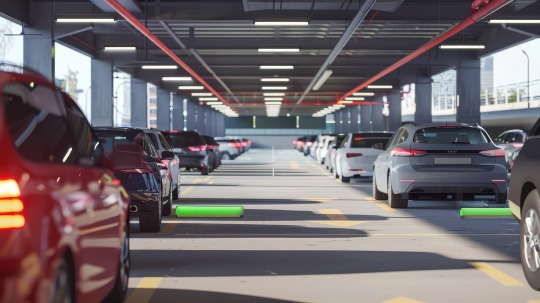
Technology is advancing quickly, and the use of color USB cameras has led to a significant change in parking management. These cutting-edge gadgets maximize parking facility space usage, boost safety, and improve surveillance. A noteworthy characteristic of parking management systems is auto framing, which enhances their efficacy and efficiency substantial.
The Importance of Color USB Cameras in Parking Management
Color USB cameras are essential for modern parking management solutions. Unlike traditional cameras, these devices capture high-quality, vibrant images that allow for better monitoring and analysis. Their ability to provide real-time color video feeds enables security personnel to make informed decisions quickly, enhancing overall safety and security in parking areas.
Enhanced Surveillance with Auto Framing Technology
Auto framing technology is a game changer for color USB cameras. This feature allows cameras to automatically adjust their field of view, focusing on areas with increased activity. For example, if a vehicle enters or exits a parking space, the camera can dynamically adjust to ensure that the most critical actions are captured clearly. This adaptability reduces the chances of blind spots and ensures comprehensive coverage.
Benefits of 8MP Security Cameras in Parking Facilities
When paired with 8MP resolution, color USB cameras deliver exceptional clarity. This level of detail is vital for identifying vehicles and individuals, especially in busy parking lots. High-resolution images contribute to better facial recognition and vehicle identification, which can be crucial in the event of incidents or disputes. By integrating 8MP cameras into parking management systems, facilities can enhance their security protocols and improve overall user experience.
The Role of HDR and 720p Cameras
While 8MP cameras provide outstanding image quality, there is also a need for versatile solutions like 720p USB cameras. These cameras are more affordable and still offer decent quality for smaller parking areas or less critical surveillance points. Moreover, HDR technology in these cameras ensures that even in challenging lighting conditions, such as nighttime or bright sunlight, the images remain clear and detailed.
Cost-Effective Solutions for Modern Parking Management
Implementing color USB cameras with auto framing capabilities offers parking management systems a cost-effective solution. By minimizing the need for multiple static cameras, facilities can save on installation and maintenance costs. These cameras can be strategically placed to cover multiple angles, providing comprehensive surveillance while maintaining a budget-friendly approach.
Future of Parking Management Technology
The future of parking management is bright, thanks in part to advancements in camera technology. As the demand for smart parking solutions grows, the integration of color USB cameras will become increasingly prevalent. These devices not only enhance security but also improve the overall efficiency of parking operations.
Take Action Today!
Are you ready to revolutionize your parking management system with cutting-edge technology? Discover how the AR0821 4K HDR USB 3.0 Camera can elevate your surveillance capabilities. Learn more about the benefits of using color USB cameras and transform your parking facility into a safer, more efficient environment.
With the right tools and technology, your parking management system can lead the way in safety, efficiency, and user satisfaction. Embrace the future today!
0 notes
Text
Unlocking Insights: How 4K HDR Cameras Enhance Retail Analytics with Auto Framing Features
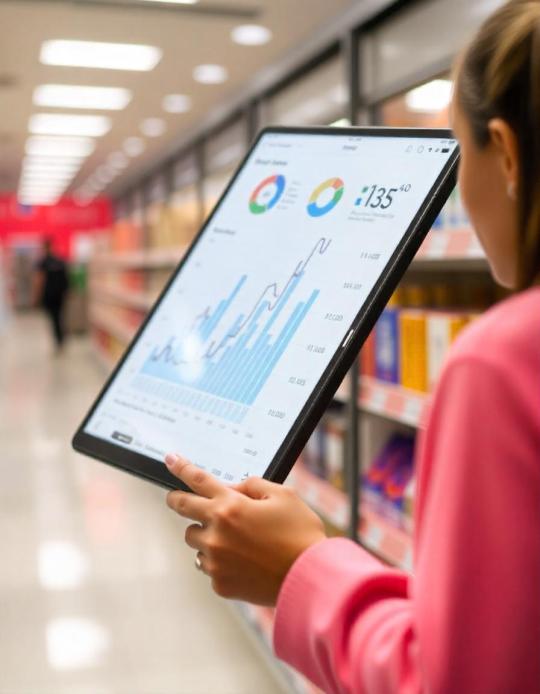
Knowing your customers is essential to success in the quickly changing retail environment. Data analysis and insight gathering are changing in retail due to the use of 4K HDR cameras and other cutting edge technologies. Retail analytics are made more successful by these cameras’ unique capabilities, such auto framing, which come in addition to their outstanding video quality.
The Importance of 4K HDR Cameras in Retail
Superior Image Quality
4K HDR cameras deliver stunning visuals that capture fine details and vibrant colors, which are essential for monitoring customer interactions and product displays. This high resolution allows retailers to analyze customer behaviors more effectively, enabling them to make informed decisions regarding inventory management and marketing strategies.
Enhancing Customer Experience
By utilizing 4K HDR cameras, retailers can gain deeper insights into customer preferences. The clarity of the footage allows for detailed analysis of customer interactions with products, leading to improved layout designs and promotional strategies. This focus on enhancing the customer experience can drive sales and increase customer satisfaction.
Auto Framing Features: A Game Changer
Dynamic Engagement
The auto framing feature in 4K HDR cameras ensures that the focus remains on customers as they move throughout the store. This dynamic engagement capability allows retailers to capture essential moments without manual adjustments, leading to more comprehensive data collection. Retailers can analyze these interactions to understand which areas of the store attract the most attention.
Real-Time Analytics
With auto framing, 4K HDR cameras provide real-time data analysis, enabling retailers to adjust their strategies instantly. For example, if certain products are not receiving attention, retailers can modify their placement or enhance marketing efforts accordingly. This adaptability is key in a fast-paced retail environment.
Integrating 4K HDR Cameras with Retail Analytics Platforms
Seamless Data Collection
Integrating 4K HDR cameras with retail analytics platforms streamlines the data collection process. Retailers can effortlessly gather video footage and extract valuable insights, such as foot traffic patterns and dwell times, which inform strategic decisions. The combination of high-resolution visuals and advanced analytics provides a comprehensive view of customer behavior.
Maximizing ROI
Investing in 4K HDR cameras with auto framing capabilities can lead to significant returns on investment. By understanding customer preferences and optimizing store layouts, retailers can enhance sales and reduce costs associated with ineffective marketing strategies. This technology empowers retailers to stay competitive in an ever-changing market.
Take Action Today
Ready to elevate your retail analytics? Explore the power of 4K HDR cameras with auto framing features. Discover how these advanced tools can unlock insights and drive your retail success. Check out the AR0821 4K HDR USB 3.0 Camera and see the difference for yourself. Embrace the future of retail analytics today!
0 notes
Text
Revolutionizing Transactional Kiosks with HDR 4K Cameras: A New Era in Customer Experience
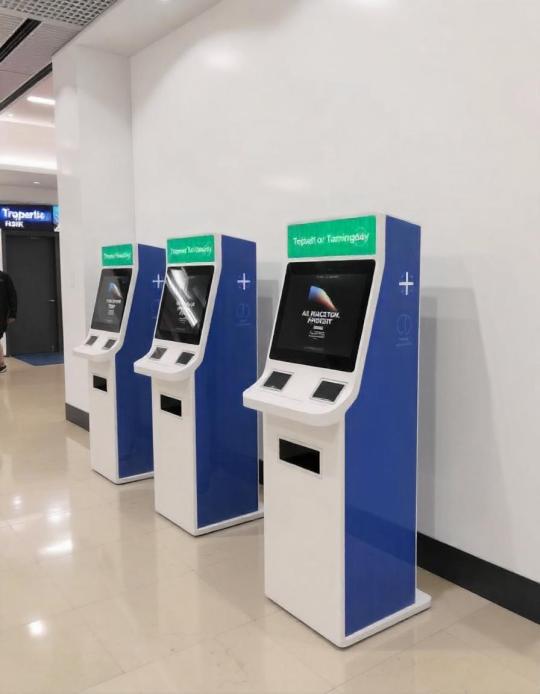
Introduction to HDR 4K Cameras
The integration of HDR 4K cameras into transactional kiosks marks a significant shift in how businesses interact with customers. These advanced cameras provide high-resolution imagery and exceptional detail, enhancing the overall customer experience. With the growing demand for efficiency and quality in service delivery, HDR 4K cameras have emerged as a key player in transforming transactional kiosks.
Enhancing Visual Clarity and Detail
One of the standout features of HDR 4K cameras is their ability to deliver stunning visual clarity. This high resolution allows for better identification of products and services displayed on kiosks, leading to more informed customer choices. Whether it’s a retail kiosk displaying clothing, food, or technology, the visual detail provided by HDR 4K cameras elevates the shopping experience. Customers can see vibrant colors and intricate details that 720p cameras simply cannot match, fostering a more engaging interaction.
Improving Customer Interaction
The incorporation of HDR 4K cameras facilitates better customer interaction through features like auto framing and facial recognition. Auto framing adjusts the camera angle to ensure that the customer is always in focus, regardless of their position. This technology not only makes the interaction smoother but also enhances security measures by accurately identifying individuals at the kiosk. With the rise of contactless transactions, the role of cameras in ensuring a seamless experience has never been more crucial.
Boosting Security and Fraud Prevention
Security is a top concern for businesses utilizing transactional kiosks. HDR 4K cameras contribute significantly to this aspect by providing high-definition footage that can be crucial in monitoring activities around the kiosk. The clarity and detail in the video feed make it easier to identify potential threats or fraudulent activities. This heightened security feature instills confidence in customers, encouraging them to use kiosks for transactions without hesitation.
Versatility in Applications
The versatility of HDR 4K cameras makes them suitable for various transactional environments. From retail to banking, these cameras can adapt to different use cases, ensuring that businesses can optimize their kiosks for any setting. The integration of such advanced technology in different sectors paves the way for more interactive and efficient customer service solutions.
If you’re looking to enhance your transactional kiosks with cutting-edge technology, consider implementing HDR 4K cameras. Discover how the AR0821 4K HDR USB 3.0 camera can revolutionize your customer interactions by visiting this link. Elevate your business’s customer experience today!
Final Thoughts on the Future of Kiosks
As businesses continue to evolve, the demand for improved customer experience and security will grow. The adoption of HDR 4K cameras in transactional kiosks represents a forward-thinking approach to meet these needs. With the potential for enhanced interactions, greater security, and the ability to adapt to various industries, these cameras are set to redefine the future of customer engagement in kiosks.
By embracing this technology, businesses can not only meet customer expectations but exceed them, paving the way for increased satisfaction and loyalty.
0 notes
Text
UVC Compliant Cameras: Transforming Cleanliness Standards in Informational Kiosks
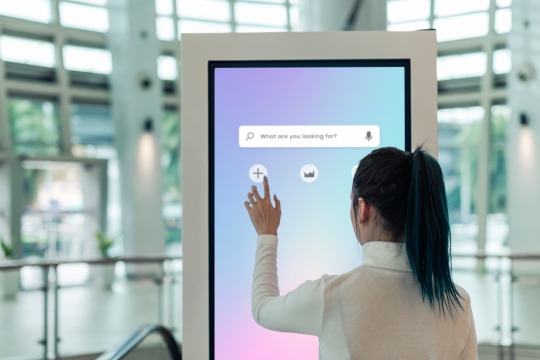
UVC compliant cameras being integrated into informational kiosks is changing public health and safety at a time when cleanliness and hygiene are more vital than ever. Modern ultraviolet-C (UVC) technology is used by these advanced cameras to not only provide superb visual data but also to keep surfaces clean and stop the spread of infections.
The Intersection of Hygiene and Technology
Informational kiosks are commonly found in high-traffic areas such as malls, airports, and hospitals. These touchpoints are prone to high levels of contact, making them potential hotspots for bacteria and viruses. UVC compliant cameras address this challenge by combining the traditional role of a camera with an added layer of protection. The UVC light emitted by these cameras helps disinfect surfaces around the kiosk, ensuring a cleaner environment for users.
Why UVC Compliance Matters
UVC compliant cameras are specifically designed to meet rigorous standards for ultraviolet light emission, making them effective in killing a broad spectrum of microorganisms. This is particularly important in high-touch environments where hygiene is paramount. The integration of UVC technology ensures that informational kiosks not only serve their informational purpose but also contribute to a healthier environment.
Key Benefits of UVC Compliant Cameras in Informational Kiosks
Enhanced Public Health: By incorporating UVC technology, kiosks can significantly reduce the presence of harmful bacteria and viruses, contributing to overall public health. This is especially crucial in settings like healthcare facilities where the risk of infection is higher.
Cost-Effective Hygiene Solution: While traditional cleaning methods require frequent manual intervention and ongoing costs, UVC compliant cameras offer a cost-effective, automated solution. The ongoing maintenance costs are reduced as the camera helps in maintaining cleanliness on its own.
Increased User Confidence: With heightened awareness around hygiene, users are more likely to engage with kiosks that visibly prioritize cleanliness. UVC compliant cameras provide an added assurance that the surface they are interacting with is regularly sanitized.
Reduced Downtime: Regular cleaning can lead to downtime and inconvenience. UVC cameras help keep the kiosk clean without interrupting its operation, ensuring that it remains functional and accessible at all times.
Practical Implementation in U.S. Public Spaces
In the United States, where public health standards are closely monitored, the adoption of UVC compliant cameras in informational kiosks aligns with ongoing efforts to improve hygiene in public spaces. Whether it's in a bustling airport terminal or a busy shopping center, the integration of these cameras ensures that informational kiosks contribute to a cleaner, safer environment.
Future Trends and Innovations
As technology evolves, the role of UVC compliant cameras in informational kiosks is likely to expand. Future advancements may include enhanced UVC disinfection features, better integration with other smart technologies, and improved user interfaces that provide real-time cleanliness status updates.
By embracing UVC compliant camera technology, businesses and public institutions can set a new standard for cleanliness and safety in informational kiosks. The synergy of advanced imaging and disinfection capabilities ensures that public touchpoints remain as hygienic as possible, fostering a healthier environment for everyone.
0 notes
Text
Precision in Action: How 2MP USB Cameras Enhance Pick and Place Robots

Pick and place robots are one area where the fast-paced world of automation makes precision quite clear. Because of their exceptional accuracy in doing repeated tasks, these robots are highly valuable in a variety of industries, including electronics and manufacturing. The 2MP USB camera is one technological advancement that has greatly improved their functionality.
The Role of 2MP USB Cameras in Pick and Place Robots
1. Enhanced Visual Accuracy
At the heart of any effective pick and place robot is its ability to accurately identify and manipulate objects. A 2MP USB camera offers high-resolution imaging that allows these robots to distinguish between different items with precision. This level of detail is crucial for tasks that require sorting, packaging, or assembling parts. The clarity provided by a 2MP camera ensures that even the smallest discrepancies are caught, reducing errors and increasing overall efficiency.
2. Streamlined Integration and Versatility
The USB interface of the 2MP camera makes it incredibly easy to integrate into existing robotic systems. Unlike other camera types that may require specialized hardware or software, a USB camera can be quickly connected and configured. This plug-and-play functionality reduces setup time and allows for seamless integration with various robotic controllers and software platforms.
3. Real-Time Processing and Feedback
A significant advantage of using a 2MP USB camera is its ability to provide real-time visual feedback. This immediate processing capability allows pick and place robots to make instant adjustments based on the camera’s input. Whether it’s correcting an alignment issue or adapting to variations in object positioning, the real-time data stream ensures that the robot operates with maximum precision.
4. Cost-Effective Solution
While high-resolution cameras can be costly, 2MP USB cameras strike a balance between quality and affordability. They provide sufficient resolution for most pick and place tasks without the premium price tag of higher megapixel cameras. This cost-effectiveness makes them an attractive option for companies looking to enhance their automation processes without significant investment.
5. Improved Object Recognition
Object recognition is a critical function in automated systems, and the 2MP USB camera excels in this area. With its high resolution, it can accurately identify and categorize objects based on size, shape, and color. This capability is essential for applications where precise handling and placement are required, ensuring that each item is correctly processed according to its specifications.
Practical Applications in Various Industries
Manufacturing
In manufacturing, pick and place robots equipped with 2MP USB cameras are used for assembling components, sorting products, and packaging items. The high-resolution imaging allows for precise placement and quality control, reducing defects and increasing throughput.
Electronics
In the electronics industry, where components can be tiny and intricate, the clarity provided by a 2MP USB camera is invaluable. Robots can handle and place delicate components with precision, ensuring that complex assemblies are correctly completed.
Food and Beverage
The food and beverage industry benefits from the accuracy of 2MP USB cameras in pick and place robots used for packaging and sorting products. The high resolution helps in maintaining hygiene standards and ensures that only the correct items are processed.
Pharmaceuticals
In pharmaceuticals, where precision is crucial for handling medication and packaging, 2MP USB cameras provide the necessary detail for accurate sorting and placement. This accuracy helps in maintaining quality control and compliance with regulatory standards.
Exploring Further Technological Advancements
As automation technology continues to evolve, the integration of advanced imaging systems with pick and place robots is set to become even more sophisticated. Exploring innovations such as machine learning algorithms for enhanced object recognition and integration with AI-driven control systems could further boost the capabilities of 2MP USB cameras in robotics.
In summary, 2MP USB cameras are transforming the landscape of pick and place robotics by providing enhanced visual accuracy, seamless integration, real-time feedback, and cost-effective solutions. Their impact across various industries highlights their importance in advancing automation technology and improving operational efficiency.
0 notes
Text
Enhancing Security with Dewarping Cameras: A Game-Changer for Access Control Systems
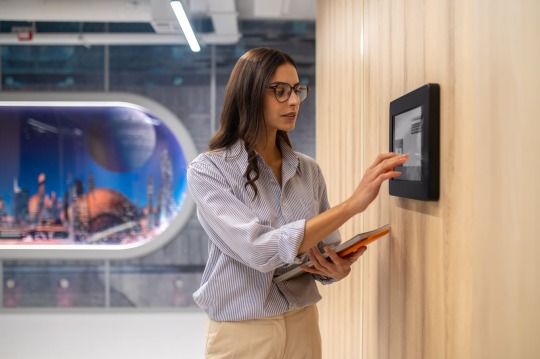
Access control systems are essential for protecting buildings and facilities in today's rapidly changing security landscape. A major development in this area that offers better precision and efficiency is the incorporation of dewarping cameras. Let's examine how these cameras are revolutionizing access control systems and offering unmatched advantages.
Understanding Dewarping Cameras
Dewarping cameras are equipped with advanced software that corrects the distortions caused by wide-angle lenses. This technology is particularly beneficial for surveillance systems, where a broader field of view is essential but often comes with the trade-off of image distortion. Dewarping cameras address this issue by providing clear and undistorted images, which are crucial for precise identification and monitoring.
Benefits for Access Control Systems
1. Enhanced Image Clarity and Accuracy
Traditional surveillance cameras with wide-angle lenses often produce images with significant distortion, making it challenging to accurately identify individuals. Dewarping cameras correct these distortions in real time, resulting in clearer and more accurate images. This enhanced clarity is vital for access control systems where precise identification is necessary to prevent unauthorized access and ensure security.
2. Broader Coverage with Fewer Cameras
By employing dewarping cameras, security systems can achieve comprehensive coverage with fewer devices. The wide-angle capability of these cameras allows them to monitor larger areas without the need for multiple cameras. This not only reduces installation and maintenance costs but also streamlines the overall security infrastructure.
3. Improved Incident Analysis
In the event of a security breach or incident, having accurate, undistorted footage is invaluable. Dewarping cameras provide clear visuals that are crucial for reviewing events and making informed decisions. This capability enhances the effectiveness of access control systems by enabling better incident investigation and response.
4. Integration with Modern Security Technologies
Dewarping cameras can seamlessly integrate with advanced access control systems, including biometric scanners and automated entry systems. This integration ensures a cohesive and efficient security setup, where all components work in harmony to enhance overall security.
5. User-Friendly Experience
The improved image quality and broader coverage of dewarping cameras translate into a more user-friendly experience for security personnel. Clearer visuals make monitoring and managing access points more intuitive and less prone to error.
Future Trends in Dewarping Technology
As technology continues to advance, dewarping cameras are likely to see further innovations. Emerging trends such as AI-powered dewarping and enhanced real-time processing are expected to further elevate the capabilities of these cameras. Keeping abreast of these trends will be crucial for leveraging the full potential of dewarping technology in access control systems.
Exploring Practical Applications
Dewarping cameras are particularly effective in high-traffic areas such as office lobbies, airports, and shopping centers, where managing and monitoring large crowds is a challenge. Their ability to provide clear, distortion-free images makes them an ideal choice for such environments, enhancing overall security and operational efficiency.
For security professionals and facility managers in the U.S., integrating dewarping cameras into access control systems represents a significant step forward. By adopting this technology, they can achieve better security outcomes, optimize resources, and stay ahead in the evolving landscape of security management.
0 notes
Text
Illuminating Precision: The Role of Low Light HD Cameras in Advancing Medical Robotics
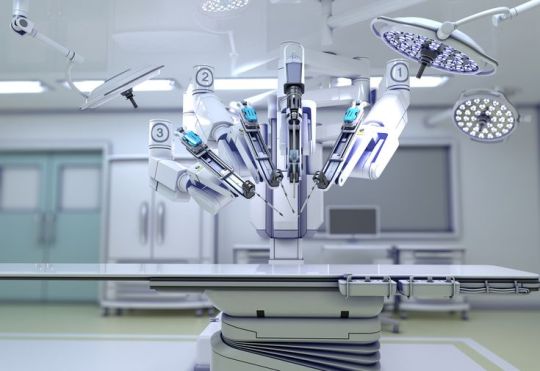
Precision and lucidity are critical in the field of medical robotics. The demand for sophisticated imaging systems is higher than ever as surgical procedures become more intricate. With their ability to provide improved vision and precision under difficult lighting circumstances, low light HD cameras are essential to this evolution. This blog explores how surgical techniques are affected by these state-of-the-art cameras and how they are revolutionizing medical robotics.
Unmatched Clarity in Dim Environments
Medical procedures often take place in environments where optimal lighting is not always possible. Traditional cameras might struggle to deliver clear images in low-light conditions, potentially compromising the effectiveness of robotic surgery. Low light HD cameras address this issue with their superior sensitivity to low light, ensuring that every detail is captured with crystal-clear precision. This capability is crucial for tasks that demand meticulous attention, such as minimally invasive surgeries where precision is vital.
Enhanced Surgical Precision
The integration of low light HD cameras into medical robots allows for unprecedented accuracy during operations. Surgeons can rely on high-definition visuals to make real-time decisions, even in poorly lit or complex anatomical areas. The enhanced imaging provided by these cameras enables better maneuvering of robotic instruments, improving outcomes and reducing the risk of errors. This level of precision is essential for delicate procedures where every movement counts.
Improving Diagnostic Capabilities
Beyond surgical applications, low light HD cameras also enhance diagnostic capabilities. These cameras can capture high-quality images of internal structures that might otherwise be missed or obscured due to low lighting. This improvement in imaging leads to better diagnostic accuracy and more informed treatment decisions, benefiting both patients and healthcare providers.
Facilitating Remote Consultations
With the rise of telemedicine and remote consultations, the need for high-quality, low-light imaging has become even more significant. Low light HD cameras enable healthcare professionals to conduct detailed virtual assessments and consultations, providing clear visuals even in less-than-ideal lighting conditions. This capability ensures that remote diagnostics and surgeries can be performed with the same level of precision as in-person procedures.
Advancing Robotic Training and Development
The role of low light HD cameras extends to the training and development of medical robotics. By incorporating these cameras into training simulators, medical professionals can practice and refine their skills in simulated low-light environments. This hands-on experience helps prepare surgeons for real-world scenarios, enhancing their proficiency and confidence.
Expanding Applications in Medical Robotics
The versatility of low light HD cameras opens up new possibilities for medical robotics. From enhanced imaging for complex surgeries to improved diagnostic tools and training aids, these cameras are pushing the boundaries of what’s possible in medical technology. As the field of medical robotics continues to advance, the integration of high-performance imaging solutions like low light HD cameras will play a crucial role in shaping its future.
For more insights into the latest advancements in medical robotics and imaging technologies, explore our related topics on enhancing diagnostic capabilities with advanced imaging solutions and the future of robotic surgery innovations.
0 notes
Text
Enhancing Remote Consultations: The Role of Low Light HD USB Cameras in Telemedicine
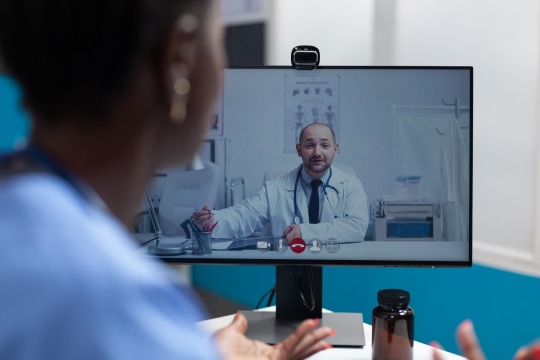
Telemedicine, which enables remote consultations and expands medical services beyond of conventional clinic walls, has emerged as a crucial element of healthcare in today's fast-paced society. Effective communication between patients and healthcare providers is essential for a telemedicine consultation to be successful. This is where technology, in particular low light HD USB cameras, becomes useful.
The Importance of Clear Visuals in Telemedicine
Effective remote consultations rely heavily on high-quality video feeds. Clear visuals help healthcare providers make accurate assessments, understand patient symptoms better, and deliver more effective care. However, poor lighting conditions can significantly impact the quality of video, making it challenging to capture critical details.
Why Low Light HD USB Cameras Matter
Low light HD USB cameras are designed to perform well even in suboptimal lighting conditions. They are equipped with advanced sensors and image processing capabilities that enhance image quality in dim environments. This feature is particularly useful in telemedicine, where consultations may occur in various settings, including home environments that might not have ideal lighting.
Benefits for Remote Patient Consultations
Improved Diagnostic Accuracy: Low light HD USB cameras provide clear, high-resolution images even in poorly lit rooms. This ensures that healthcare providers can observe and evaluate symptoms more accurately, leading to better diagnostic outcomes.
Enhanced Patient Experience: With clear visuals, patients can better convey their symptoms and concerns. This improved communication helps in building trust and ensures that patients feel heard and understood, even from a distance.
Versatility and Convenience: These cameras are highly adaptable, making them suitable for a range of telemedicine applications. Whether it's a routine check-up, a specialist consultation, or a follow-up appointment, low light HD USB cameras can handle diverse scenarios effectively.
Cost-Effective Solution: Compared to high-end medical imaging equipment, low light HD USB cameras are a cost-effective option. They provide excellent image quality at a fraction of the cost, making them accessible for various healthcare settings.
Technological Advancements Driving Quality
Recent advancements in camera technology have significantly improved the performance of low light HD USB cameras. Features such as enhanced image sensors, noise reduction algorithms, and low-light optimization contribute to superior image clarity. These innovations are crucial for telemedicine, where high-quality video feeds are essential for accurate diagnosis and patient care.
Adapting to Different Environments
Telemedicine consultations can take place in various environments, from well-lit offices to dimly lit living rooms. Low light HD USB cameras are designed to adapt to different lighting conditions, ensuring consistent video quality. This adaptability is vital for maintaining high standards of care regardless of the patient’s location.
Future Trends in Telemedicine and Camera Technology
As telemedicine continues to evolve, so will the technology supporting it. The integration of AI and machine learning with HD USB cameras is an exciting development on the horizon. These technologies promise to further enhance image quality and provide additional functionalities, such as automatic lighting adjustments and improved diagnostic tools.
Considerations for Choosing the Right Camera
When selecting a low light HD USB camera for telemedicine, consider factors such as resolution, frame rate, and ease of integration with existing telehealth platforms. It’s also important to ensure that the camera’s performance aligns with your specific needs and the environments in which it will be used.
Exploring Future Innovations in Telehealth Cameras
As the telemedicine landscape evolves, keeping an eye on emerging trends and technologies will be crucial. Innovations in camera technology and telehealth solutions promise to further enhance the remote healthcare experience, making it more efficient and accessible for everyone.
0 notes
Text
Low Light USB Cameras: Elevating Patient Care in Low Visibility Conditions
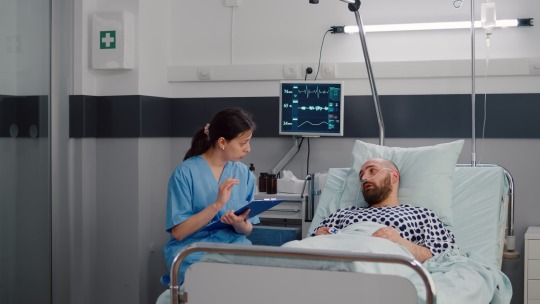
Ensuring constant, high-quality monitoring is essential in the field of patient care, particularly in low light situations when conventional surveillance techniques frequently falter. Now introduce low light USB cameras, technical wonders that are revolutionizing the way medical personnel oversee patient care in dimly lit settings.
Enhancing Nighttime Monitoring
Low light USB cameras are designed to perform exceptionally well in dimly lit settings, making them invaluable in hospitals and care facilities where night-time observation is essential. These cameras leverage advanced sensor technology and image processing algorithms to capture clear, detailed images even in near darkness. This capability ensures that healthcare providers can maintain a vigilant watch over patients, detecting any anomalies or changes in their condition with greater accuracy.
Applications in Critical Care Units
In critical care units (CCUs) and intensive care units (ICUs), where every moment can be critical, low light USB cameras offer significant benefits. Their enhanced visibility in low light conditions allows for more reliable monitoring of patients' vital signs and movements, especially during nighttime hours when lighting is typically subdued. By providing clear video feeds, these cameras help medical staff respond more promptly to patient needs and emergencies.
Supporting Patient Safety
The integration of low light USB cameras into patient care systems contributes to improved safety and security. For instance, these cameras can be installed in patient rooms to monitor for any unexpected changes in behavior or physical condition that might indicate a problem. With real-time video streaming and high-quality image capture, healthcare professionals can quickly assess situations and take appropriate action, reducing the risk of complications or incidents.
Facilitating Remote Consultations
Low light USB cameras also play a role in telemedicine, particularly in remote consultations where lighting conditions might not be ideal. They ensure that video communications between healthcare providers and patients remain clear and effective, regardless of the time of day. This is especially beneficial in rural or underserved areas where access to specialized care might be limited, enabling healthcare professionals to offer high-quality consultations from a distance.
Streamlining Documentation and Training
The use of low light USB cameras extends beyond real-time monitoring to include documentation and training. By capturing clear footage of patient interactions and procedures, these cameras provide valuable visual records that can be used for training new staff, reviewing patient care protocols, and ensuring compliance with healthcare standards. This documentation aids in continuous improvement and helps maintain high standards of care.
Improving Patient Care with Advanced Camera Technology
Low light USB cameras are redefining patient care by addressing the challenges posed by low visibility conditions. Their advanced imaging capabilities enhance nighttime monitoring, support patient safety, facilitate remote consultations, and streamline documentation processes. As healthcare facilities continue to embrace these technologies, the quality of patient care is set to improve, ensuring that even in low light conditions, patients receive the attention and care they deserve.
0 notes
Text
Boosting Retail AI: The Role of HD USB Cameras in Enhancing Customer Analytics

Businesses are utilizing artificial intelligence (AI) in the rapidly changing retail industry to gain a deeper understanding of their clientele. HD USB cameras, which are essential for collecting data and customer behavior in real time, are at the heart of this revolution. These cameras are now more than just monitoring devices; thanks to sophisticated customer analytics, they are essential to developing a unique and interesting shopping experience.
How HD USB Cameras Power Retail AI
HD USB cameras are designed to capture high-quality images and videos in real-time, which is essential for AI-driven retail analytics. By providing clear, detailed visuals, these cameras allow AI systems to analyze customer patterns with precision. From tracking customer foot traffic to recognizing facial expressions and body language, these cameras give retailers critical insights into how shoppers interact with products, displays, and store layouts.
Retailers can also use HD USB cameras to improve queue management, identifying peak shopping times and optimizing staffing levels. This ensures that customers receive prompt service, reducing frustration and increasing satisfaction.
Improving Personalized Shopping Experiences
With the help of AI and HD USB cameras, retailers can create a more personalized shopping experience. AI systems can analyze a shopper’s movements, the products they linger on, and even facial expressions to predict their preferences. This allows stores to tailor marketing messages, recommend products, or adjust pricing dynamically based on customer interest.
For example, AI can analyze a customer’s reaction to a product in real-time. If the customer seems intrigued, stores can trigger targeted promotions or discounts, delivered directly through mobile apps or digital signage. This type of engagement drives conversion rates and builds stronger customer relationships, enhancing brand loyalty.
Enhancing Store Layout and Merchandising with HD USB Cameras
Retailers often experiment with different store layouts and product placements to maximize sales. With HD USB cameras, AI can provide valuable data on which areas of the store attract the most attention and which products are getting the most engagement. This data helps retailers make informed decisions about where to place high-demand items, improving overall store performance.
Moreover, HD USB cameras allow retailers to monitor in-store traffic patterns. AI systems can identify areas of congestion or underutilized spaces, enabling businesses to adjust their layouts for smoother customer flow. This enhances the shopping experience by minimizing bottlenecks and increasing customer satisfaction.
Implementing Cost-Effective Analytics Solutions
HD USB cameras offer an affordable yet powerful solution for retailers aiming to harness AI-driven customer analytics. Compared to more complex and expensive camera systems, HD USB cameras are easy to install, maintain, and integrate into existing AI platforms. This makes them ideal for small to mid-sized retailers who want to leverage advanced technology without a hefty price tag.
Retailers can upgrade their analytics capabilities without breaking the bank, ensuring they stay competitive in the rapidly changing retail landscape. The affordability of HD USB cameras makes them accessible to a broader range of businesses, from boutique stores to larger retail chains.
Maximizing Customer Satisfaction with AI-Driven Insights
By combining the precision of HD USB cameras with the analytical power of AI, retailers can gain actionable insights into customer behavior. From understanding shopping habits to optimizing store layouts, this technology enables businesses to make data-driven decisions that enhance customer satisfaction and drive sales. As retail AI continues to evolve, the integration of HD USB cameras will only become more vital in creating smarter, more responsive shopping environments.
0 notes
Text
Enhancing Facial Recognition Accuracy with USB 2.0 Cameras
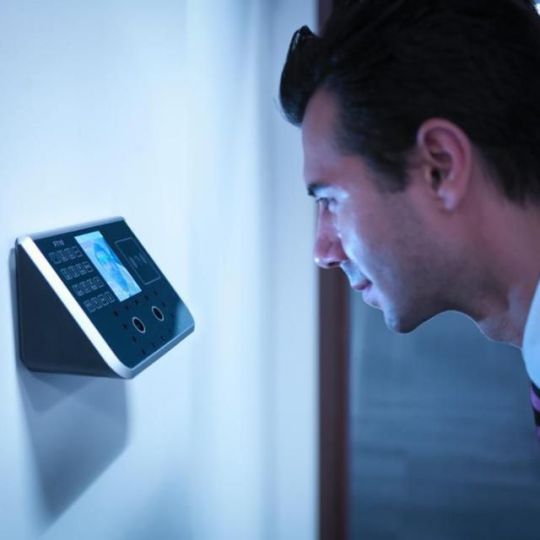
Across all industries, facial recognition technology is quickly becoming a vital component of identity and security systems. The need for trustworthy and precise facial recognition technology is rising, from expediting airport check-ins to safeguarding structures. The camera technology that is employed to obtain high-quality facial photographs is one of the key elements that propels these systems' effectiveness. USB 2.0 cameras provide a dependable and affordable way to improve the accuracy of facial recognition, even if there are many more sophisticated choices available.
Why USB 2.0 Cameras Are Suitable for Facial Recognition
Despite the advancements in high-speed camera technologies like USB 3.0 and 4.0, USB 2.0 cameras still hold their own in facial recognition applications. They offer the perfect balance between cost-efficiency and performance. USB 2.0 cameras deliver sufficient resolution and frame rates to capture detailed facial images that can be used effectively by recognition algorithms. This ensures high levels of accuracy without the need for more expensive camera systems.
One of the key benefits of USB 2.0 cameras is their compatibility with a wide range of systems. Many existing security and facial recognition systems are built around USB 2.0 technology, making these cameras easy to integrate and operate without requiring significant system upgrades. This plug-and-play functionality is ideal for organizations looking to adopt facial recognition without incurring additional hardware costs.
Cost-Effective Accuracy for Security and Access Control
When it comes to facial recognition, accuracy is paramount. False positives and negatives can lead to security vulnerabilities and inefficient identification processes. USB 2.0 cameras, while not the most cutting-edge option available, provide the level of accuracy needed for many applications, particularly in environments where lighting and positioning are controlled, such as office buildings, schools, and other access-controlled facilities.
These cameras are capable of capturing facial features in adequate detail, allowing software algorithms to detect and match faces with high precision. Moreover, because USB 2.0 cameras are more affordable than their higher-end counterparts, they enable businesses and organizations to implement facial recognition technology at a fraction of the cost without sacrificing essential performance.
Optimizing USB 2.0 Cameras for Lighting Conditions and Positioning
Lighting and camera positioning play a significant role in the performance of facial recognition systems. USB 2.0 cameras are typically optimized for environments where lighting conditions can be controlled, ensuring that facial images are captured clearly. With proper lighting adjustments, such as using soft, diffused lighting or backlighting, USB 2.0 cameras can reduce shadows and improve the visibility of key facial features.
Camera placement is also crucial for capturing accurate facial data. Positioning USB 2.0 cameras at eye level and maintaining an optimal distance between the camera and the individual enhances the camera’s ability to capture detailed facial features. Even at a lower bandwidth than USB 3.0 cameras, these simple adjustments ensure that USB 2.0 cameras are highly effective in facial recognition systems.
Exploring USB 2.0 Cameras for Indoor Environments
USB 2.0 cameras are particularly well-suited for indoor environments where facial recognition is applied. Whether it’s for office security, attendance tracking, or visitor management, these cameras deliver the performance needed for accurate identification in controlled settings. Additionally, their smaller size and lower power consumption make them an ideal choice for compact installations, such as in entryways or lobbies.
With the right adjustments and integration, USB 2.0 cameras provide a robust solution for facial recognition systems in environments where the focus is on precision, affordability, and ease of use.
0 notes
Text
Enhancing Smart Surveillance with USB 2 Cameras: The Perfect Balance of Cost and Efficiency

Achieving the right balance between cost and performance is crucial in the field of smart surveillance. A appealing alternative for both consumers and businesses, the USB 2 camera has evolved in response to the growing demand for dependable yet reasonably priced security systems. For many intelligent surveillance applications, USB 2 cameras are more than capable of producing effective and efficient outcomes, even though USB 3 and higher technologies frequently take center stage in discussions.
Why USB 2 Cameras Still Matter
Despite being around for years, USB 2.0 technology continues to be relevant in smart surveillance. Many users appreciate the USB 2 camera for its dependable performance and accessibility. Unlike higher-cost alternatives, USB 2 cameras provide sufficient video quality for most surveillance needs, offering resolutions that meet security requirements without the need for excessive data transfer rates.
Additionally, because USB 2 technology is so widespread, USB 2 cameras are compatible with most existing hardware setups, meaning less investment in new systems. They also offer ease of use, with plug-and-play functionality that simplifies installation and reduces the need for technical expertise.
Key Benefits of USB 2 Cameras in Smart Surveillance
Affordability: USB 2 cameras are a cost-effective option, making it easier for smaller businesses, residential properties, and even large-scale enterprises to install comprehensive surveillance systems without breaking the bank.
Reliable Performance: For many surveillance tasks, USB 2 cameras offer adequate video resolution and frame rates that allow for clear monitoring without overloading your network or storage system.
Widespread Compatibility: The USB 2.0 interface is supported by a wide range of devices, making it easy to integrate these cameras into existing surveillance systems without the need for specialized adapters or upgrades.
Low Power Consumption and Longevity
One of the understated advantages of USB 2 cameras in smart surveillance is their low power consumption. This feature not only makes them eco-friendly but also means they can be operated for longer periods without significant energy costs. In large surveillance systems with multiple cameras, this power efficiency can translate to considerable savings over time.
USB 2 cameras also tend to have long lifespans, thanks to their robust build and simple technology. For security setups that do not require high-speed data transfer or ultra-high-definition footage, these cameras provide reliable service for many years, reducing the need for frequent replacements or upgrades.
Transitioning to Scalable Surveillance Solutions
As security needs grow, so does the need for scalable surveillance solutions. USB 2 cameras offer the flexibility to expand security systems at a manageable cost, allowing users to add more cameras without overloading network bandwidth or storage. This makes USB 2 cameras ideal for businesses or residential properties looking to scale their surveillance systems incrementally.
For example, a retail store might start with a few cameras to cover high-traffic areas but may want to expand coverage over time. With USB 2 cameras, scaling up the surveillance system is an affordable and straightforward process.
Exploring USB 2 Camera Upgrades for Next-Level Security
While USB 2 cameras offer many advantages in terms of cost and efficiency, there are always options for upgrading to more advanced technology when needed. Users who begin with USB 2 may eventually look to incorporate higher-end solutions, such as USB 3 cameras or even wireless setups, to further enhance their security systems. By starting with USB 2, businesses and homeowners can build a solid foundation without the pressure of immediately investing in higher-cost alternatives.
Ultimately, whether you’re setting up a smart surveillance system for a home, business, or other property, USB 2 cameras offer a perfect blend of affordability, efficiency, and reliability.
0 notes
Text
How 1080p USB Cameras Are Enhancing Interactive Kiosk Experiences
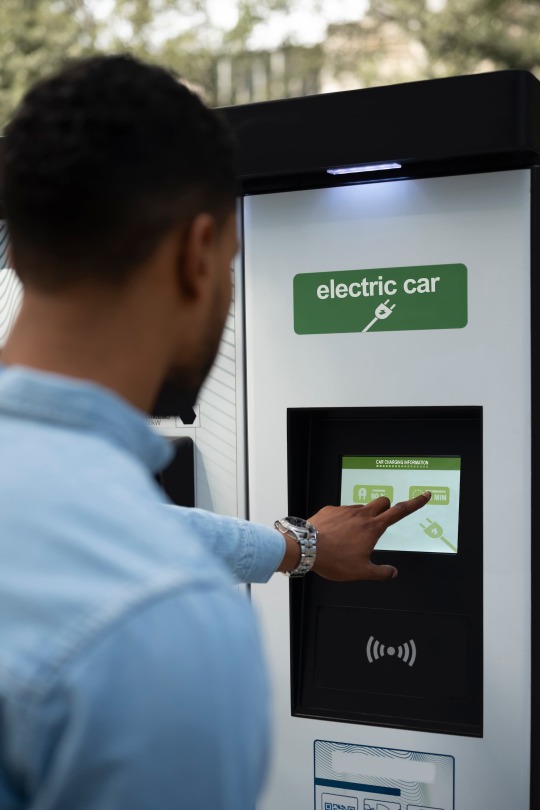
Interactive kiosks are now commonplace in many sectors of the modern economy, including retail, hospitality, healthcare, and transportation. This is because everything is done digitally. Businesses are always looking for methods to enhance customer engagement and expedite user experiences as self-service technology continues to gain traction. Integrating high-definition 1080p USB cameras is one of the best ways to improve these kiosks.
Crisp Visuals for Clear Communication
A major advantage of using 1080p USB cameras in interactive kiosks is the exceptional video clarity they offer. Whether used for virtual customer support, self-checkout systems, or information kiosks, these cameras ensure that users can see every detail in high definition. This clarity is particularly important in industries like healthcare and banking, where clear, real-time communication is crucial. A 1080p USB camera allows users to connect with virtual assistants, troubleshoot issues, or verify their identities seamlessly, without the frustration of poor video quality.
Enhancing Customer Engagement
Interactive kiosks are all about user engagement, and nothing enhances that experience more than smooth, high-quality video interactions. 1080p USB cameras make video chats and consultations more personal and immersive. In retail environments, for instance, customers can have face-to-face conversations with remote sales representatives who guide them through their purchase decisions. This level of personalization is not just convenient but also builds customer trust and satisfaction.
Additionally, in the hospitality industry, hotel guests can interact with receptionists via kiosk cameras to check in or resolve inquiries. A clear and vivid image allows for smoother communication, reducing wait times and ensuring guests feel attended to even without direct human interaction.
Security and Authentication Made Easy
Another key benefit of using 1080p USB cameras in kiosks is their role in security and user authentication. In many public-facing kiosks, especially those handling sensitive information such as ATMs or healthcare kiosks, identity verification is essential. The high-resolution imaging of 1080p USB cameras can easily capture facial details for biometric authentication, reducing the risk of fraud and identity theft.
Many companies have already begun integrating facial recognition technologies into their kiosks, enabling users to securely verify their identities in seconds. This streamlined process not only increases security but also improves user satisfaction by reducing the number of steps needed for authentication.
Improving Efficiency with Real-Time Monitoring
1080p USB cameras also provide kiosk operators with valuable real-time monitoring capabilities. Whether it’s ensuring that a retail kiosk is functioning properly or monitoring traffic in a busy airport, the camera’s high-definition feed enables operators to maintain system efficiency and address issues quickly.
For businesses, this means fewer disruptions and smoother operations, while customers benefit from reduced downtime and better overall service. The ability to capture every detail in real time ensures that any malfunctions or maintenance needs can be swiftly identified and addressed, keeping the kiosk running smoothly.
The Future of Kiosks with 1080p USB Cameras
The integration of 1080p USB cameras into kiosks represents just the beginning of a larger trend toward smarter, more interactive self-service solutions. As these systems become more advanced, we can expect further developments in AI, facial recognition, and machine learning technologies, all of which will rely on high-quality camera capabilities. These advancements will lead to even more engaging, efficient, and secure kiosk experiences across a range of industries in the United States.
0 notes
Text
Transforming Fleet Monitoring: The AR1335 Camera's Role in Advanced Telematics
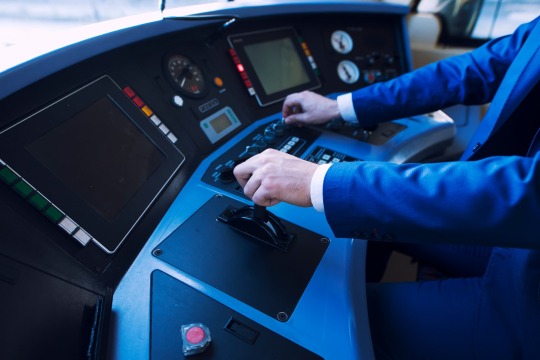
Modern technology integration is essential for improving operational effectiveness and safety in the dynamic field of fleet management. A notable example of a technology advancement in the telematics sector is the AR1335 camera, a cutting-edge image system. This blog discusses the implications for fleet managers across the United States of America of the AR1335 camera's revolutionary revolution in fleet monitoring.
Unmatched Image Quality for Better Decision-Making
At the core of the AR1335 camera's impact on fleet management is its exceptional image quality. Equipped with a high-resolution sensor, the AR1335 camera delivers crisp, clear images that are crucial for accurate monitoring and decision-making. Fleet managers can now capture detailed footage of road conditions, driver behavior, and surrounding environments, enabling them to make informed decisions based on real-time data.
Enhanced Safety and Risk Management
Safety is paramount in fleet management, and the AR1335 camera plays a crucial role in enhancing it. The camera's advanced features, such as low-light sensitivity and wide dynamic range, ensure that high-quality footage is captured even in challenging conditions, such as at night or during adverse weather. This ability to record clear images around the clock helps fleet managers monitor driver performance, identify potential hazards, and reduce the risk of accidents.
Seamless Integration with Telematics Systems
The AR1335 camera is designed to seamlessly integrate with existing telematics systems, making it a versatile choice for fleet operators. Its compatibility with various telematics platforms allows for easy data synchronization and real-time monitoring. This integration ensures that fleet managers have access to comprehensive insights, including video feeds, vehicle diagnostics, and driver behavior analytics, all in one cohesive system.
Streamlining Fleet Operations with Real-Time Data
One of the standout features of the AR1335 camera is its ability to provide real-time data. By transmitting live video feeds and critical information to fleet management systems, the AR1335 camera enables managers to monitor fleet operations as they happen. This real-time capability facilitates quicker responses to incidents, improved route planning, and better overall fleet management.
Driving Efficiency and Cost Savings
Efficiency is a major concern for fleet operators, and the AR1335 camera contributes significantly to this goal. By providing detailed footage and data, the camera helps identify areas where operations can be optimized, such as improving driving habits or reducing fuel consumption. Additionally, the ability to quickly resolve disputes and verify incidents with clear video evidence can lead to reduced insurance costs and fewer legal challenges.
The Future of Fleet Monitoring
As technology continues to advance, the AR1335 camera represents a step forward in the evolution of fleet monitoring. Its high-resolution imaging, enhanced safety features, and seamless integration with telematics systems make it an invaluable tool for fleet managers. By adopting the AR1335 camera, fleets across the U.S. can stay ahead of the curve, leveraging cutting-edge technology to drive operational excellence and achieve better results.
In a landscape where every detail matters, the AR1335 camera stands out as a game-changer in fleet management. Its advanced features and capabilities offer fleet managers the tools they need to improve safety, efficiency, and overall performance. Embracing such innovations ensures that fleets are not only keeping pace with industry advancements but are also setting new standards for excellence.
0 notes
Text
Driving Innovation: How 13MP USB Cameras are Revolutionizing Intelligent Transportation Systems

The revolutionary powers of 13MP USB cameras have made it easier than ever to see the way the future of transportation will look. High-resolution cameras are becoming essential instruments in the fast changing field of intelligent transportation systems (ITS) since they improve overall system performance, safety, and efficiency.
What Makes 13MP USB Cameras a Game-Changer?
At the heart of their revolutionary impact is their impressive 13-megapixel resolution. Unlike standard cameras, 13MP USB cameras offer unparalleled clarity, capturing detailed and precise images that are crucial for accurate analysis and decision-making. This high resolution enables transportation systems to monitor and manage traffic more effectively, providing a clear view of road conditions, vehicle movements, and potential hazards.
Enhanced Safety Through Superior Image Quality
One of the primary benefits of 13MP USB cameras in ITS is their role in improving safety. High-definition video feeds allow for more accurate detection of traffic violations, such as red-light running and speeding. By capturing clear images of license plates and vehicle details, these cameras provide law enforcement with critical evidence that can be used for enforcement and accident investigation. This level of detail is instrumental in reducing traffic accidents and ensuring that drivers adhere to traffic laws.
Boosting Efficiency with Real-Time Data
Efficient traffic management is another area where 13MP USB cameras excel. With their ability to deliver high-quality, real-time video feeds, these cameras help traffic management centers monitor and respond to congestion and incidents more swiftly. By integrating these cameras into intelligent traffic signal systems, transportation agencies can optimize signal timings and reduce traffic delays. This not only improves the flow of traffic but also contributes to lower emissions and fuel consumption, promoting a greener and more sustainable urban environment.
Seamless Integration into Existing Systems
Another advantage of 13MP USB cameras is their ease of integration into existing ITS infrastructure. Utilizing standard USB interfaces, these cameras can be quickly and cost-effectively incorporated into current systems without the need for extensive modifications. This plug-and-play functionality makes them an attractive option for agencies looking to upgrade their surveillance capabilities without overhauling their entire setup.
Empowering Advanced Analytics
The high-resolution footage provided by 13MP USB cameras also enhances the capabilities of advanced analytics tools. By feeding clear, detailed images into machine learning algorithms, transportation agencies can gain deeper insights into traffic patterns and driver behavior. This data-driven approach enables more informed decision-making and the development of predictive models to address future traffic challenges.
Transforming Public Transportation
Public transportation systems are also benefiting from the deployment of 13MP USB cameras. In buses and trains, these cameras are used to monitor passenger safety and track on-time performance. By providing clear views of interior and exterior conditions, they help ensure that public transit remains a reliable and secure option for commuters.
Paving the Way for Smart Cities
As cities continue to evolve into smart urban environments, 13MP USB cameras are playing a pivotal role in this transformation. Their ability to deliver high-definition video and integrate seamlessly with other smart technologies supports the development of more responsive and adaptive transportation systems. This integration is essential for building cities that can efficiently manage growing populations and complex transportation networks.
The Road Ahead
The integration of 13MP USB cameras into intelligent transportation systems represents a significant leap forward in how we manage and experience transportation. By leveraging their high-resolution capabilities, transportation agencies can enhance safety, efficiency, and overall system effectiveness. As technology continues to advance, the role of these cameras in shaping the future of transportation will undoubtedly become even more crucial, driving innovation and setting new standards for smart city infrastructure
0 notes
Text
The Role of Embedded Cameras in Revolutionizing Remote Diagnostics for Telemedicine

Embedded cameras are starting to become a game-changer in the rapidly developing field of telemedicine. These small, powerful devices are leading the way in changing how doctors diagnose and treat patients remotely as healthcare becomes more digital.
What Are Embedded Cameras?
Embedded cameras are compact, high-performance imaging devices integrated into various electronic systems. Unlike standalone cameras, these devices are seamlessly embedded into medical equipment, computers, or mobile devices, providing high-quality video and image capture without the need for separate hardware.
Enhancing Remote Diagnostics
One of the primary ways embedded cameras are revolutionizing telemedicine is through enhanced remote diagnostics. Traditionally, remote consultations relied on verbal descriptions and basic video calls, which often led to incomplete assessments. With embedded cameras, healthcare providers can now conduct detailed visual examinations from afar.
These cameras offer high-resolution imaging, allowing doctors to observe fine details that are crucial for accurate diagnoses. Whether it’s monitoring a patient’s skin condition, examining wounds, or assessing physical symptoms, the clarity provided by embedded cameras ensures that remote consultations are as effective as in-person visits.
Real-Time Patient Monitoring
Embedded cameras are also pivotal in real-time patient monitoring. In telemedicine, continuous observation of patients’ health conditions is often necessary, especially for those with chronic illnesses or undergoing rehabilitation. Cameras embedded in home health devices can transmit live footage to healthcare providers, enabling timely interventions and adjustments to treatment plans.
For example, a patient recovering from surgery might use an embedded camera in their home monitoring system to provide their doctor with real-time views of their healing progress. This allows the doctor to make informed decisions about the patient’s care without requiring frequent office visits.
Integration with AI and Machine Learning
The integration of embedded cameras with artificial intelligence (AI) and machine learning is further enhancing remote diagnostics. Advanced algorithms can analyze video feeds from embedded cameras to detect patterns and anomalies that might be missed by the human eye. This synergy between technology and healthcare is leading to earlier detection of conditions and more personalized treatment plans.
Improving Accessibility and Convenience
In the USA, where access to healthcare can vary greatly depending on location, embedded cameras play a crucial role in bridging the gap. Rural and underserved communities often face challenges in accessing specialized medical care. Embedded cameras enable these communities to connect with top-tier specialists remotely, making healthcare more accessible and convenient.
Additionally, the convenience of remote diagnostics reduces the need for travel, which can be a significant barrier for many patients. Embedded cameras allow individuals to receive high-quality medical care from the comfort of their own homes, saving time and reducing stress.
A Future of Enhanced Care
As telemedicine continues to grow, the role of embedded cameras will only become more significant. Their ability to provide detailed, real-time visual information is transforming remote diagnostics and paving the way for a new era of healthcare.
With ongoing advancements in technology, the integration of embedded cameras will likely become even more sophisticated, further improving the accuracy and efficiency of remote medical care. For patients and healthcare providers alike, this means a future where high-quality, accessible medical consultations are just a click away.
The impact of embedded cameras on telemedicine is profound, offering new possibilities for remote care and making high-quality healthcare accessible to more people across the USA.
0 notes